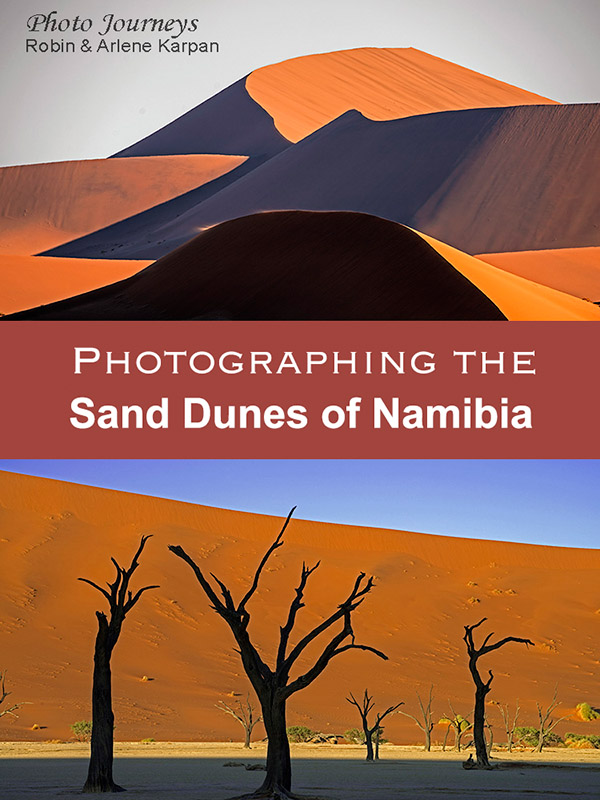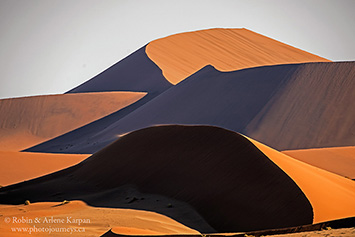
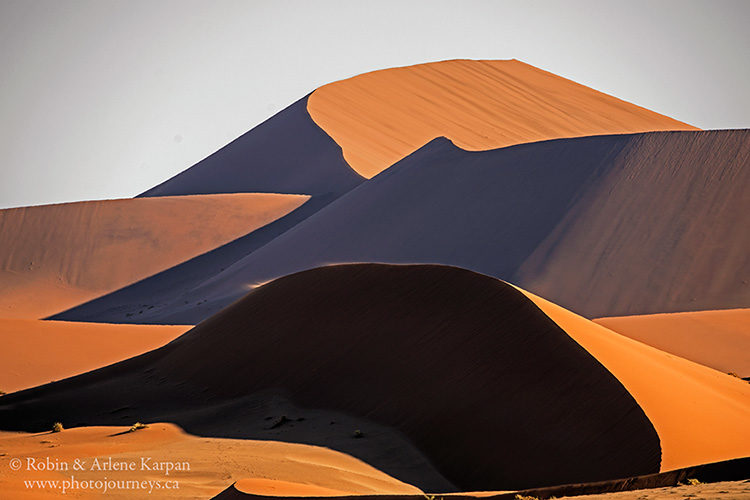
If you like sand dunes, this is the ultimate destination. The famous dunes of the Namib Desert cover much of Namibia’s Atlantic coast and stretch far inland – the world’s oldest desert, boasting the world’s largest sand dunes, some over 300 metres high. But it’s not just size that matters. Even more impressive is the colour. Oxidized iron makes the sand a brilliant reddish-orange, but under different light conditions, hues range from fire-engine red to a subtle pink or yellowy-beige. Before our first trip to Namibia, we looked at photos of the dunes and couldn’t help but wonder if those colours were real. But when we saw them for the first time, we immediately realized that this is one of those rare places that more than lives up to the hype.
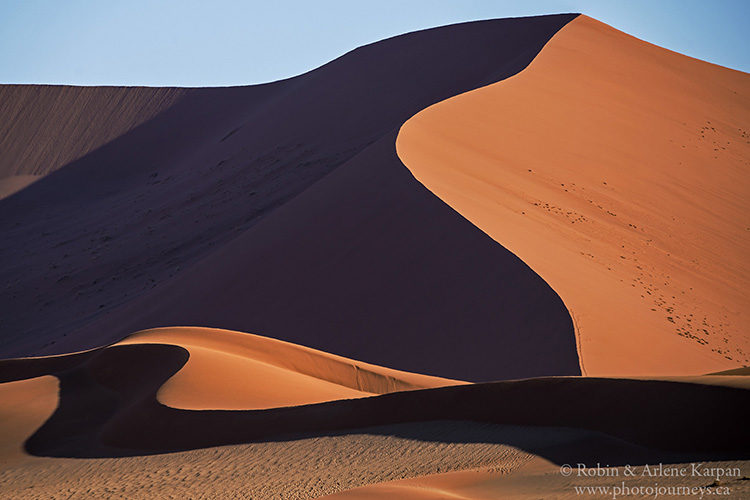
Setting the Stage
Guided tours abound, but we think that the best way to visit the dunes is on your own with a rental car. While there are various places to visit dunes, the undisputed hot spot is Sesriem and Sossusvlei in Namib-Naukluft National Park. Sesriem is at the entrance to the park, where the park visitor centre and campground are located, and near Sesriem Canyon, also worth a short visit. From here a paved road follows an old river bed for 60 kilometres into the heart of the desert. The valley narrows more and more as you travel the road, with increasingly larger dunes on both sides.
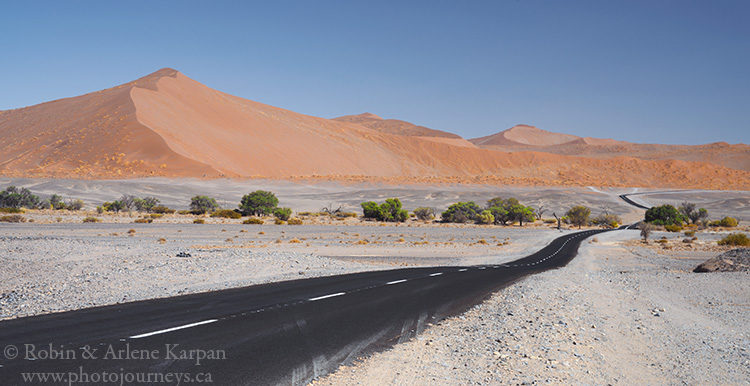
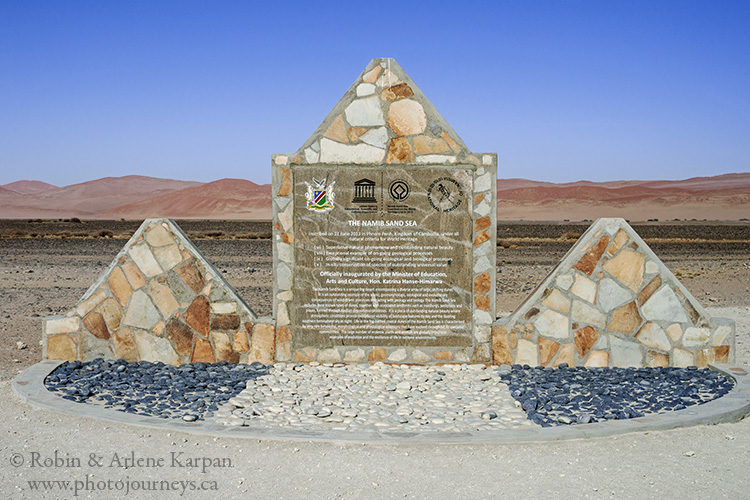
Dune 45
Dune 45, appropriately named for being 45 km down the road, is the most popular dune for visitors to climb, since it is right beside the road. One morning, we left our pitch-black camp an hour before daybreak to experience sunrise atop Dune 45. We trudged slowly up the spine of the sprawling 170-metre-high dune in the cool morning air, an exhausting workout since we sank into loose sand with every step.
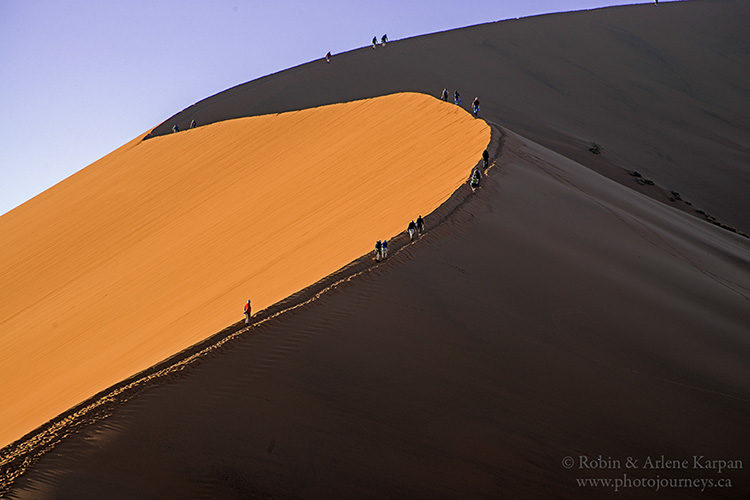
The view on top is breathtaking, especially as the sun begins to clear the horizon then suddenly bathes the sea of sand with a warm red glow. Our way down was a lot more fun. Instead of following the winding crest to the bottom, we ran down the steep edge of the dune. Running down such a steep incline isn’t normally a smart thing to do, but here our feet sank more than ankle deep with each step, so there was little danger of losing control.
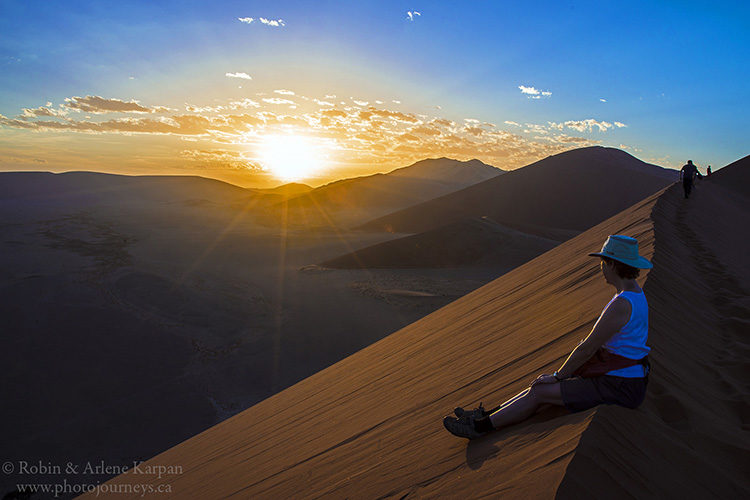
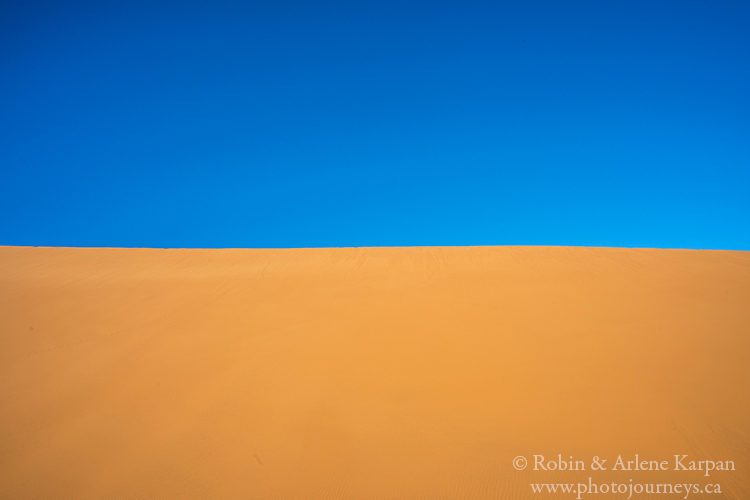
Sossusvlei and Deadvlei
After about 60 km, the paved road ends at a parking lot. From here it’s another five km to the parking area for Sossusvlei, a shallow depression surrounded by the Namib’s largest dunes, most flowing in broad sinuous curves with knife-edge crests, and blending into the vast dune fields beyond. Four-wheel drive vehicles can get there along the rough sandy track, but even they sometimes get bogged down in the thick sand. For those, including us, who don’t have four-wheel drive, it’s necessary to take one of the park shuttle vehicles.
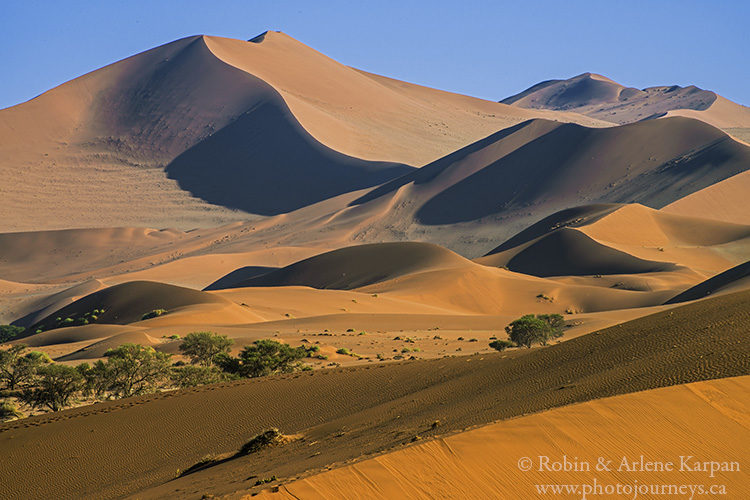
One morning we left camp before sunrise and drove right to the end of the road, then caught a shuttle directly to the Sossusvlei area. Some people come here at first light to climb the giant dunes, with names like Big Daddy and Big Mama. But our goal was to take the 10-15 minute hike into Deadvlei just as the sun was clearing the horizon. Hundreds of years ago, a depression was formed when the river flooded, allowing camelthorn trees to flourish. When the climate changed and the area dried about 900 years ago, the trees died and became desiccated where they stood in this barren tree graveyard.
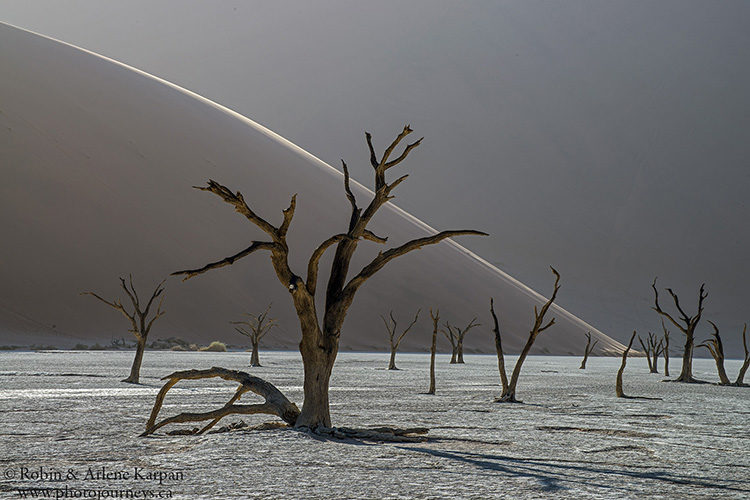
This brilliant white former marsh, with ancient trees and a backdrop of brilliant orange dunes, is our favourite part of this magical place. When the sun clears the dunes to the east, it washes a dazzling glow over the dunes and trees. If you can get there early enough, the dunes are already lit by the sun while some of the trees are still in shadow, making for a dramatic contrast between the black silhouette of the trees against the dunes.
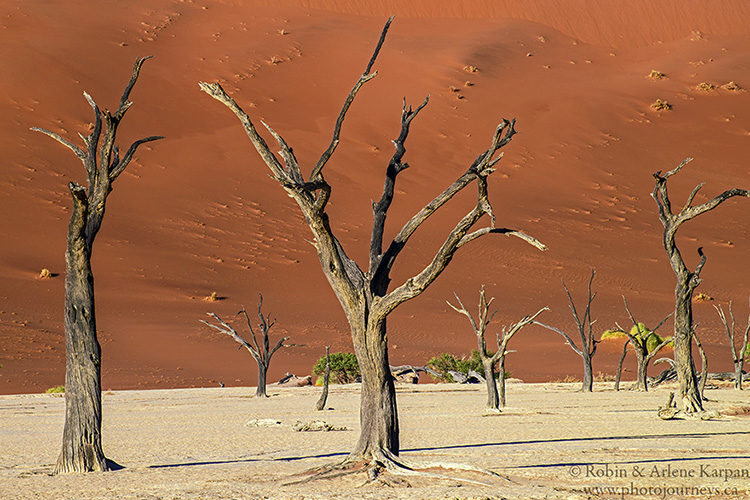
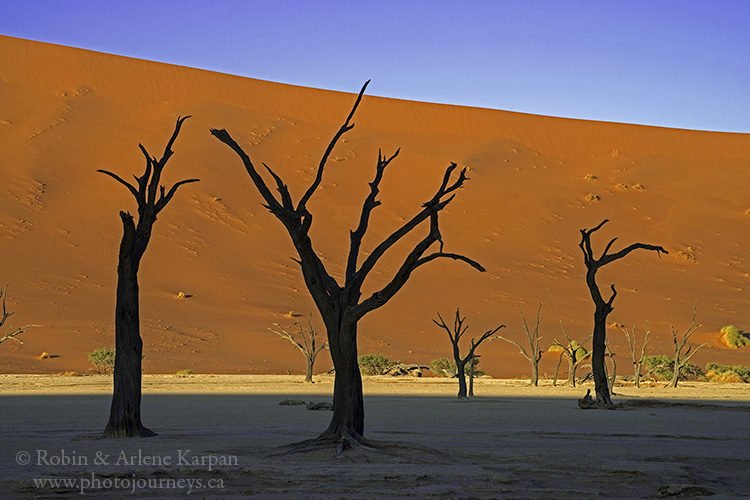
The Photographic Experience
Besides a few “must-do” experiences, most photography here is simply exploring the almost endless possibilities. The numerous curves and contours of the dunes can be interpreted in so many different ways, and the light is constantly changing. While we usually think wide-angle for landscape photography, we used telephoto lenses quite a lot. A telephoto is especially useful for isolating a piece of the dunes that you find photogenic, or for compressing the elements in the frame.
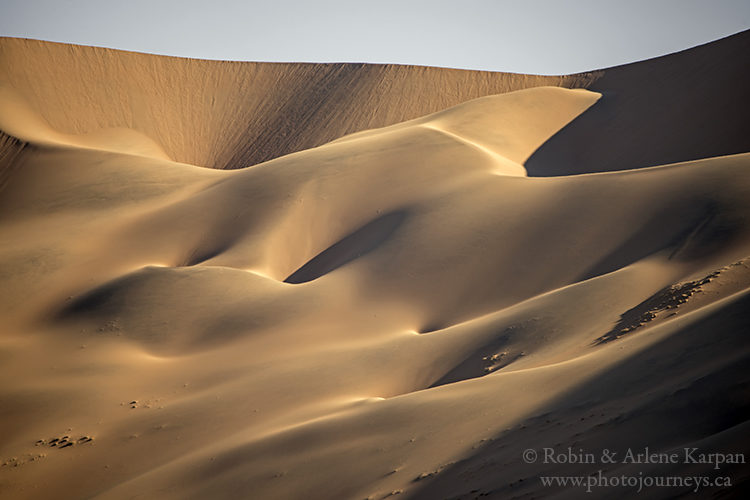
While this isn’t a wildlife destination as such, you might use your telephoto lens to photograph a few interesting critters. We saw gemsbok quite often, plus a few springbok and ostriches.
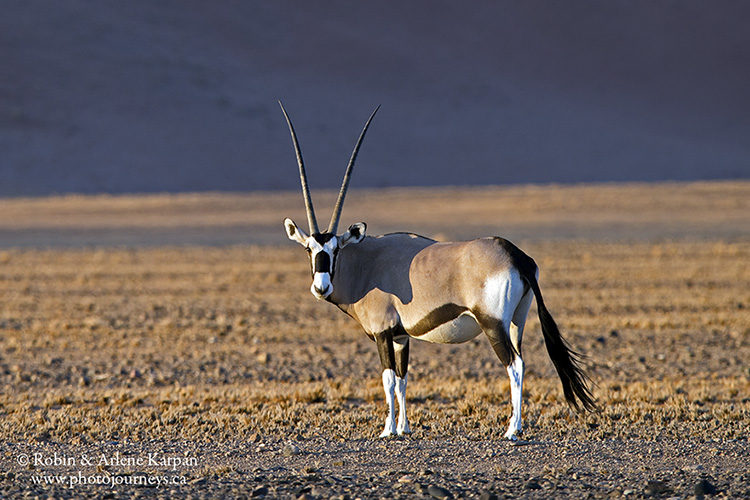
Photographing close to sunrise and sunset and avoiding midday is a general rule for most landscape photography, but that goes double for sand dunes. In the heat of the day, the brilliant colours of the dunes fade away and scenes tend to look flat. Our usual routine was to head out to the dunes for sunrise, then come back to camp during the middle of the day, then head out again in lake afternoon. The closest dune to the park entrance is the Elim Dune only a 10 minute or so drive away, a convenient spot to go for sunset.
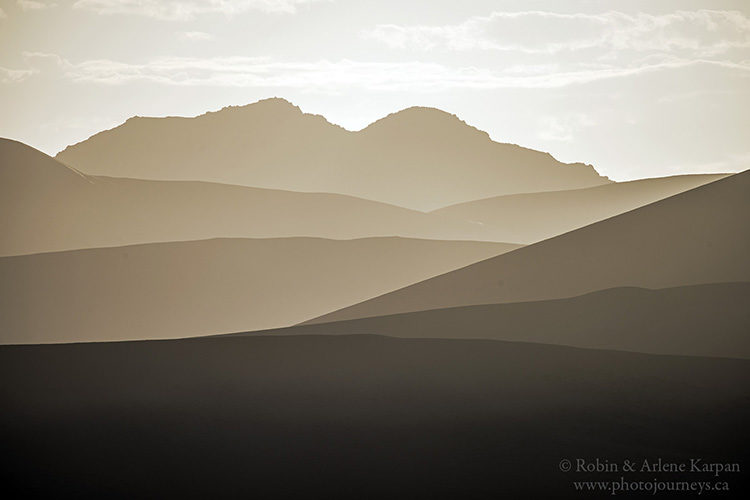
Where to stay
For us, there was only one place to stay that made any sense – Sesriem Campsite. While there are a few different lodges and campgrounds nearby, some just outside the park gate, this is the only campground located inside the park. The reason that this is important, especially for photographers, is that the park opens to visitors from sunrise to sunset. But for those staying inside the park, the gate to the dunes road opens an hour before sunrise, giving you time to drive well into the dunes in order to be in place to photograph the sunrise.
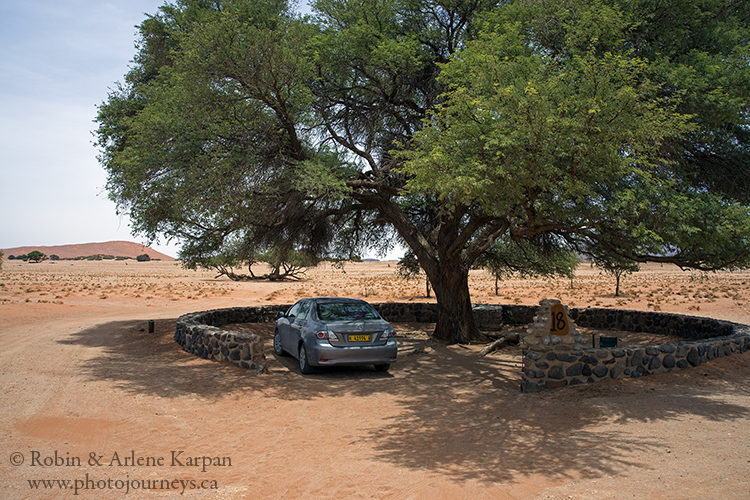
The 24 campsites are fairly large and surrounded by low stone enclosures that help to keep sand from blowing in. Sites have electricity and a barbecue stand, and most have a large camelthorn tree for shade. Buildings with bathrooms and showers are nearby. Some campsites are clearly better than others. Some don’t have adequate shade and others are inundated with sand. Before checking in, drive around the campground and take note of site numbers that look appealing then ask if they are available. Some access roads in the campground could be a problem for small cars if a lot of sand had been blowing around. It wasn’t busy during our most recent visit, however it is best to book ahead since the campground can fill up. You can book online through the Namibia Wildlife Resorts website https://www.nwr.com.na/
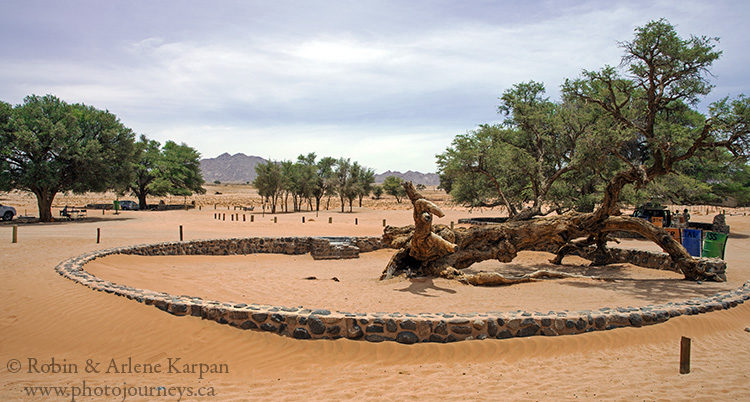
If you’re camping, it’s best is to bring enough food for your stay. The campground has a shop and sells ice, but the food selection is extremely dismal, to say the least. Slightly better is the small shop at the petrol station near the park gate. The water in the campground is fine to drink.
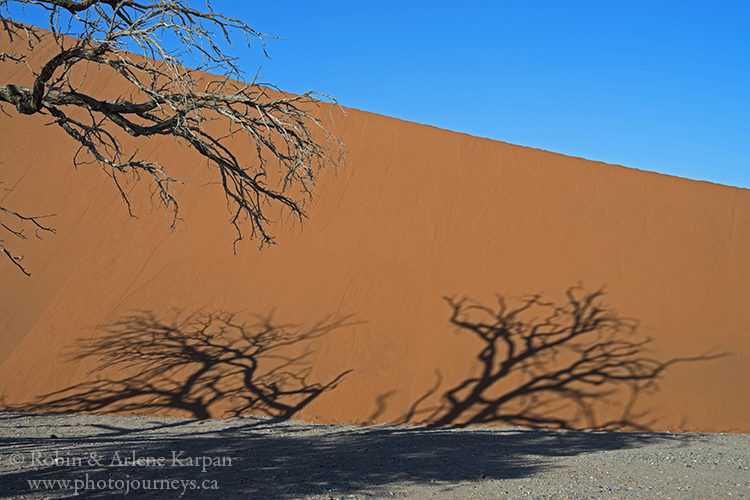
Costs
The current cost for campsites is $220 Namibian per person. This is in addition to the $80 Namibian park admission fee. If you don’t have a 4-wheel drive vehicle, the shuttle from the end of the road to the parking area for Sossusvlei and Deadvlei costs $170 Namibian return. The Namibian dollar is currently worth roughly $.09 Canadian or $.07 US. The Nambian dollar is on par with the South African Rand, which serves as a second currency that is accepted everywhere throughout the country. If you don’t want to camp, there is a one very expensive lodge inside the park, plus a variety of other accommodation outside the park.
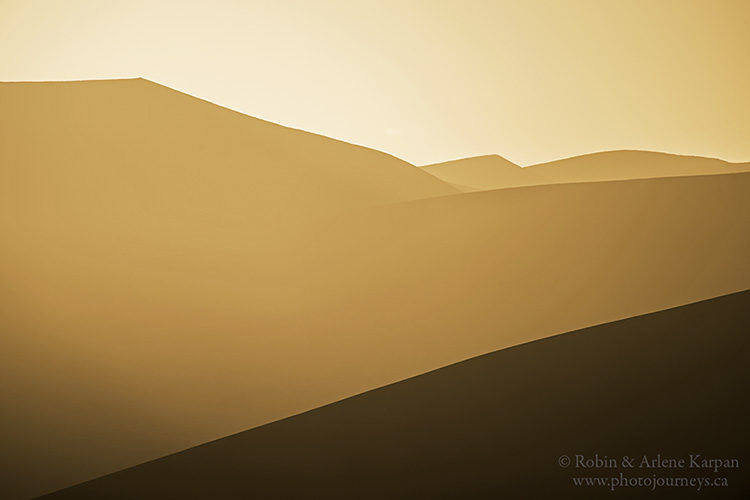
How long to stay
We were surprised to find that most visitors stay only one or two nights. For photographers, three nights is definitely more comfortable and allows more possibilities. During our three days, conditions were different each day. One morning was perfectly crisp and clear, with super-saturated colours on the dunes at sunrise. Another morning, fog enveloped most of the dunes as we approached Sossusvlei, making it great for atmospheric fog images. Another day we had a lot of haze in the air. It was okay for closer photos but wider “grand view” shots proved lack-lustre. Had the haze day been our only day at the dunes, it would have been quite disappointing from a photography point of view. This is one of the world’s prime photo destinations, and far away from everywhere, so be sure to allow yourself enough time.
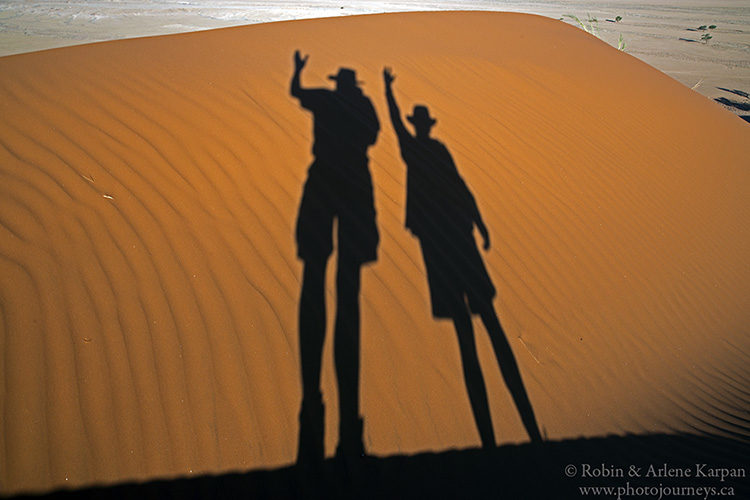
A Useful Resource for Anyone Sharing Photos on Social Media
Sharing your photos on social media and blogging is a great way to connect with others and keep them informed on your travels. Looking for more information on how to make the most of your social media and photography blog posts? Have a read through this article for top tips on managing your online presence as a photographer.
Feel free to PIN this article
